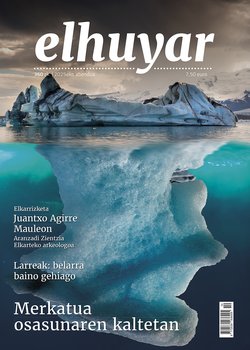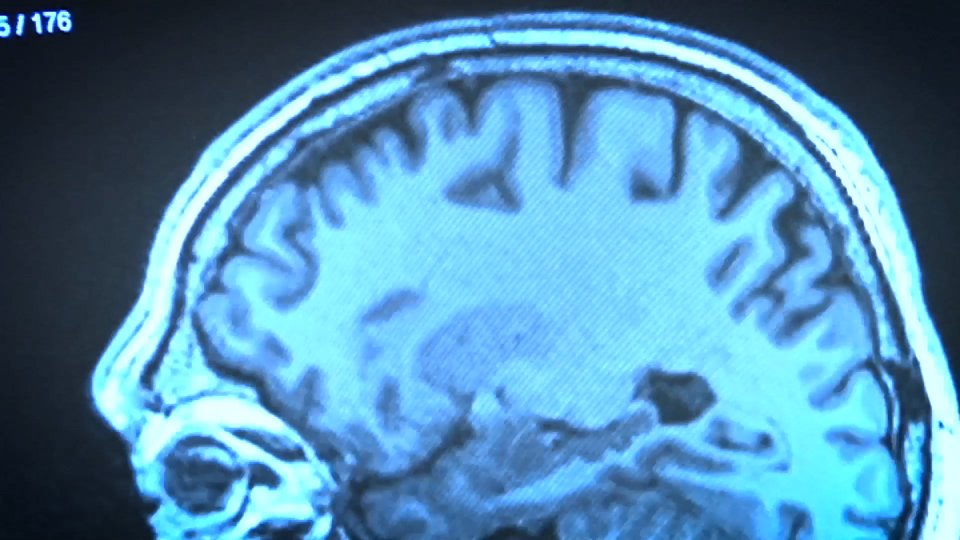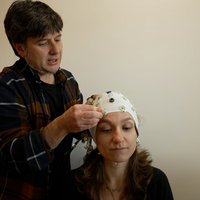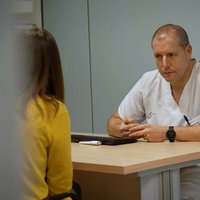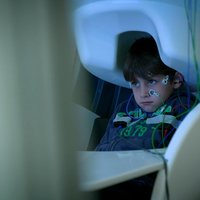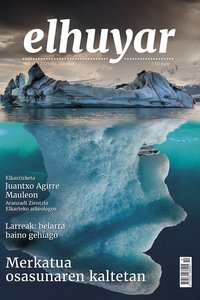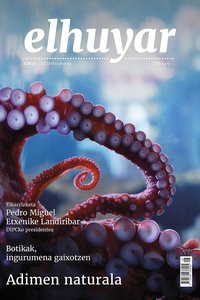Medicines, making the environment sick
Little one remembers the medicines once they have affected our body. But the life of drugs does not end there. We expel them and they reach the environment. They could stay in our body for a couple of hours; for decades in the environment. And there, they also affect other living beings. This problem is very attentive to the pharmacist Saiz Domingo Echaburu and the environmental chemist Néstor Etxebarria Loizate.

“Drugs have been found all over the world, in all countries, and in all environmental matrices, especially in water, but also in the soil, in the air, in animals, and in the rest of the living,” says pharmacist Saiz Domingo Echaburu. “We have a problem and a big problem.”
Domingo is an expert in pharmacocoagulation, a pharmacist at ESI de Debagoien and a member of the Basque Sustainable Pharmacy team. Although it is daily for him, he realizes that the subject is relatively unknown: “If you ask people to name pollutants, they will mention microplastics, dioxins, PCBs, etc., but not drugs, not even health professionals.”
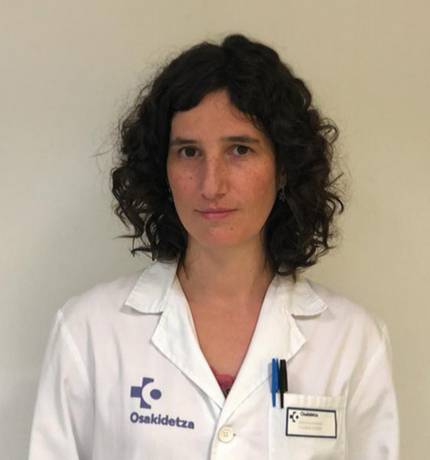
Néstor Etxebarria Loizate is a professor of analytical chemistry with many years of experience in research on chemical pollution in the environment, in the Faculty of Chemistry of the UPV/EHU and in the Plentzia Marine Station. “It is necessary to take into account that we are constantly, and increasingly, emitting, it is a chronic pollution that can have a great long-term impact,” explains Etxebarria. “And drugs don’t benefit the environment; they are capable of affecting everything, even at very low concentrations.”
This is one of the inherent characteristics of drugs, which makes them particularly harmful to the environment: they are designed to act at low concentrations. Also, to be stable until they reach the goal, so sometimes they can last for a long time. “The situation is very variable depending on the drug, some are rapidly degraded, but for example in some lakes in Sweden it has been observed that benzodiazepines can last for 30 years,” explains Domingo.
Thus, it is very common to find concentrations sufficient to cause damage to the environment. In a toxicological study published in 2022, 1,052 sites were sampled in 104 countries and found that 43.5% had alarming drug concentrations.
In addition, as with other contaminants, some drugs accumulate in living organisms, which sometimes have higher concentrations than they have in the environment. A study in the rivers of central Europe found more than 90 drugs in fish and found that in some areas the concentration of fish in the blood was higher than in the blood of people taking these drugs as therapy. In another study, drugs that accumulate in Australian river insects were studied. And they calculated that ornithorrins that feed on these insects, as in the case of antidepressants, take more than half the dose that humans take.
The Common Cities
We don’t know what happens to ornithorrinics with antidepressants, but “many pharmacotherapeutic targets are phylogenetically highly conserved,” warns Domingo. “This means that these targets are not only found in humans; they can also be found in many other animals.”
A clear example of this is the statins. In rich countries, many are prescribed to lower cholesterol. “They were found in molds,” explains Domingo, “they are used for chemical warfare between them. They are in fact antimicrobials, but we use them against cholesterol because they inhibit an enzyme that is essential in cholesterol synthesis.” And this enzyme, or a very similar one, is present in all animals. Thus, statins can have an antimicrobial effect on the environment and also inhibit cholesterol synthesis in all animals. For example, it has been found that they can inhibit the exoskeleton marrow of various crustaceans at concentrations that can be found in the environment.
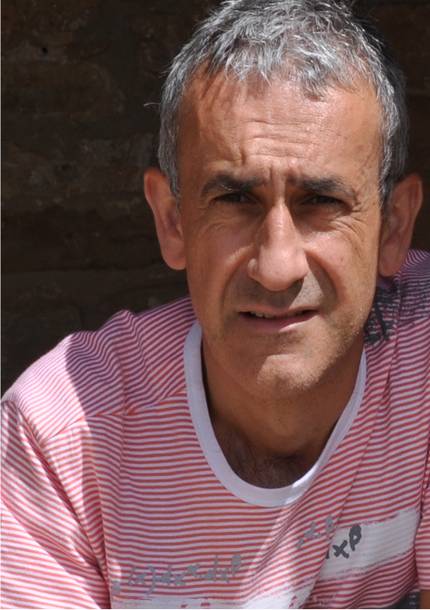
“The drugs or metabolites that we excrete can remain active and have an impact on the environment because they are very special substances,” explains Domingo. “That’s why, among emerging pollutants, drugs are one of the biggest concerns.”
However, only a few examples of this effect are still known. “We know very little about the ecotoxicological effect of drugs,” says Etxebarria. According to a 2019 study, the ecotoxicological effect of 88% of the drugs used is unknown. “Some are neurotoxic, others cytotoxic, or endocrine disruptors, some can cause fertility problems, others affect growth. A lot of people are researching this now in the labs. On the other hand, when we excrete them, they are often not the original drugs, but metabolic derivatives, and we also do not know much about their possible effect. That's another coke. To be honest, there’s almost everything to know.”
Towards a sustainable pharmacy
The Basque Sustainable Pharmacy initiative was created with the aim of combating drug abuse and paving the way towards a sustainable pharmacy. “Training, research, outreach and solution-oriented innovation are the foundations of the initiative,” explains Domingo.
They put a lot of emphasis on training, because they believe that it is essential to train health professionals in this field. Thus, a postgraduate course on drug safety and sustainable pharmacy was launched. This is the third edition.
In terms of research, they do so in a variety of ways. On the one hand, they analyze how health professionals view the topic and their knowledge. “It often seems that environmental issues are the responsibility of other professionals: chemists, biologists, etc., but we use drugs in our daily lives and we have that responsibility,” Domingo confesses.
They are also involved in environmental impact measurement projects. For example, in collaboration with the AMBAR association and the Plentzia Marine Station, they studied the disembarked dolphins and found several drugs, including three drugs that are not used in the Basque Country. “It was the first time drugs were measured in dolphins and it was striking,” explains Domingo. “Several questions arose, such as how these drugs have reached the dolphins.”
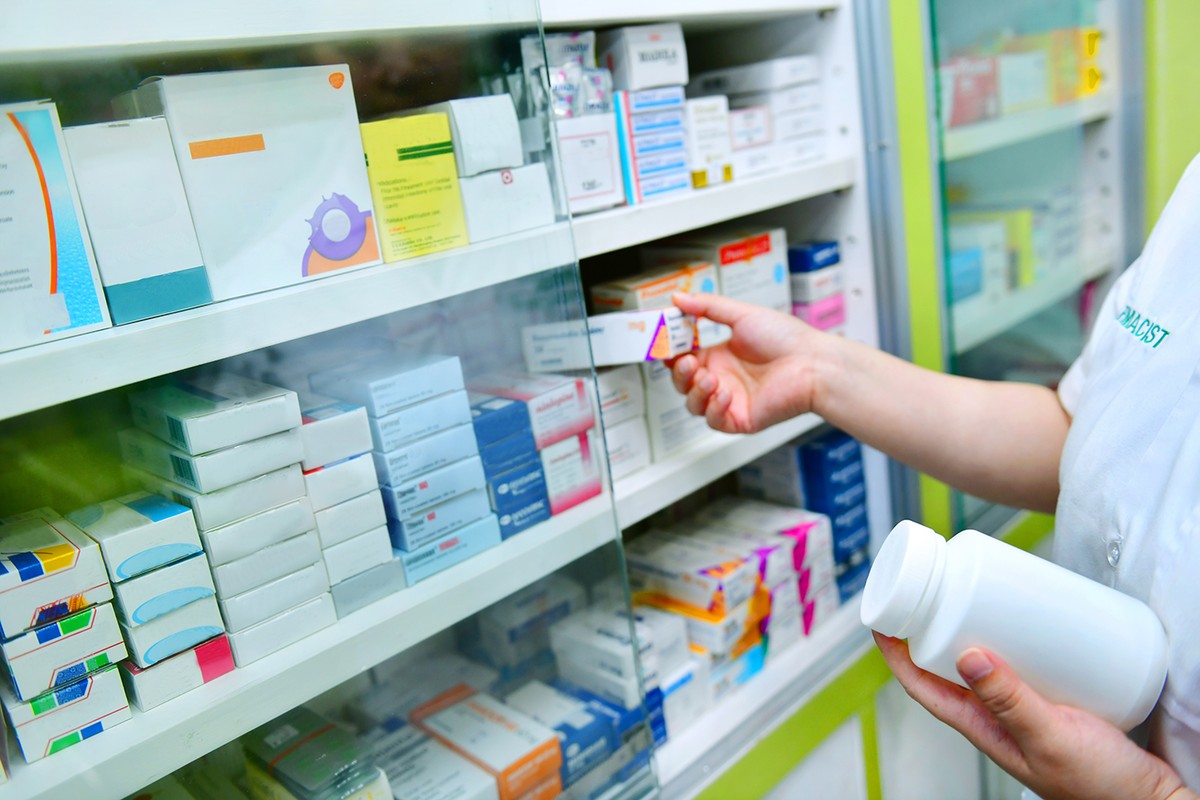
The impact of drug contamination is also investigated at the Plentzia Marine Station. For example, how it affects antibiotic resistance is being studied. In fact, “we have detected that some pollutants released from treatment plants increase antibiotic resistance,” explains Etxebarria. These contaminants include antibiotics, but also other drugs and compounds. “Various compounds from the cleaners we use at home also increase antibiotic resistance,” he says.
"In our experiments we have found that when exposed to these contaminants, bacteria with resistance genes increase their transmission," Etxebarria explains. “And this transmission can be between species, not just within the species. Those who have these genes that cause antibiotic resistance are released into the environment and acquired by others. In this way, species that previously did not have resistance to antibiotics also develop this resistance.”
Domingo also highlights the magnitude of the problem and proclaims the One Health approach: “Environmental impacts can affect our health. The antibiotic is very clean, but not only that; it was also seen with diclofenac. The Saiyans disappeared, and perhaps we can think that the disappearance of a species is not so important, but the disappearance of the Saiyans had consequences for human health. Sometimes we take the environment as if it were another being, but we are the environment. Everything is connected; this is the philosophy of One Health. And if you don’t care about biodiversity, etc., at least think about your health, because it will come back.”
The same vision has also been proclaimed. “The use of drugs has been very anthropocentric, just for our own good. And we haven't considered what happens when they're expelled. But the health is shared, of all the living. We need to change our approach to make it less anthropocentric, and maybe we’ll take better care of drug use.”
The solutions, the variety
Regarding the solutions, both experts agree that they should be varied and that measures should be taken at all points in the chain. On the one hand, it is necessary to clean the waters better. “The problem is that the systems currently used in the treatment plants are not designed to remove drugs and other emerging contaminants,” says Domingo.
Both mentioned a step forward in the new Urban Wastewater Directive adopted last year in Europe, which sets tighter limits for more drugs. “The technological resources of the treatment plants will have to be updated to comply with these limits, but that will be 10 to 15 years from now,” clarifies Etxebarria. “There’s a lot of engineering and management. It's complicated, because we have very large sewage treatment plants. Another solution could be that hospitals, for example, have their own purification plants. That would reduce pollution.”
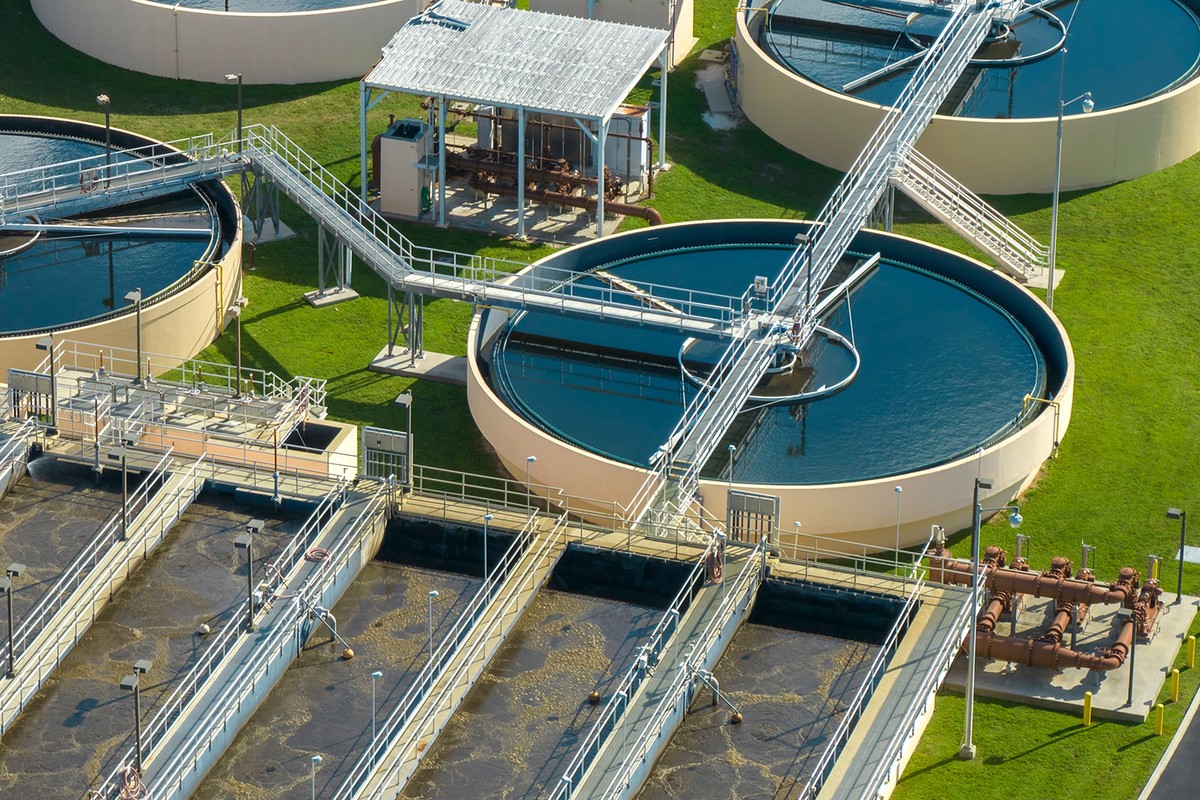
“And the other way is to go to the source of the problem,” adds Etxebarria, “which means we have to make better use of the drugs.” Domingo agrees, pointing out that many measures can be taken in this regard. Among them, he believes that the basic thing would be to use fewer drugs: “If society is healthier, we will need fewer drugs. It has to start with prevention.”
“We are not against medicines at all,” he says, “we need them very much, but it is also very necessary to use them wisely. For example, we know the effect of polymedication. Too many medications are often used, which also harms patients and increases mortality. So if we use them less, it will be better for patients and the environment.”
On the other hand, efforts should also be made to make medicines more biodegradable. “It’s not easy, but there are several initiatives in Europe to promote green design,” says Domingo.
He mentioned the “green prescription” next. “In order to do this, we first need to know the impact of the medicines so that we can then choose the greenest ones.” And secondly, the awareness and training of health professionals is essential. In countries such as Sweden and Scotland, some steps have been taken in this direction. “Primary care physicians have a list of the best options for the environment.”
Another Scottish example is Domingo’s ban on desflurane anesthetic gas for its global warming potential (2,500 times higher than CO2). "This is a milestone because it is the first time that a drug for human use has been banned because of its environmental impact."
“In Spain, for example, it has not been banned, but a group, ‘Green Anesthesia’, has been created to look for better alternatives.” Something similar happens with some inhalers for the treatment of asthma; the gases used by pressurizates as propellants are highly polluting. And there are less polluting alternatives, such as dry powder. “They are not the best option for all patients and should always be adapted according to the needs of the patient, but in cases where possible it is a matter of choosing the greenest option,” explains Domingo. “I think there will be more examples like this from now on.”
Looking to the future, the experts see many and great challenges, but Etxebarria highlights two. “On the one hand, to have a completely scientific point of view. We want to know what these processes are like; the potential risk of releasing drugs or any other contaminants in nature, not just for us, but for all living things.”
The second challenge that has been mentioned by Etxebarria is a social one. “We can provide resources to the administration to prevent the problem from getting worse and to put solutions in place. But society also needs to understand that there is a risk there and we need everyone’s input to change things.”
“I believe that as we reach a higher level of awareness, more emphasis will be placed on tackling the problem; training is key, the first step in tackling the problem,” says Domingo. “And this will ultimately change our daily pharmacotherapy. The effectiveness, safety, price, etc. of medicinal products must, of course, be taken into account, but also the environmental impact. It’s hard, but I think we’re on the right track.”
Buletina
Bidali zure helbide elektronikoa eta jaso asteroko buletina zure sarrera-ontzian


